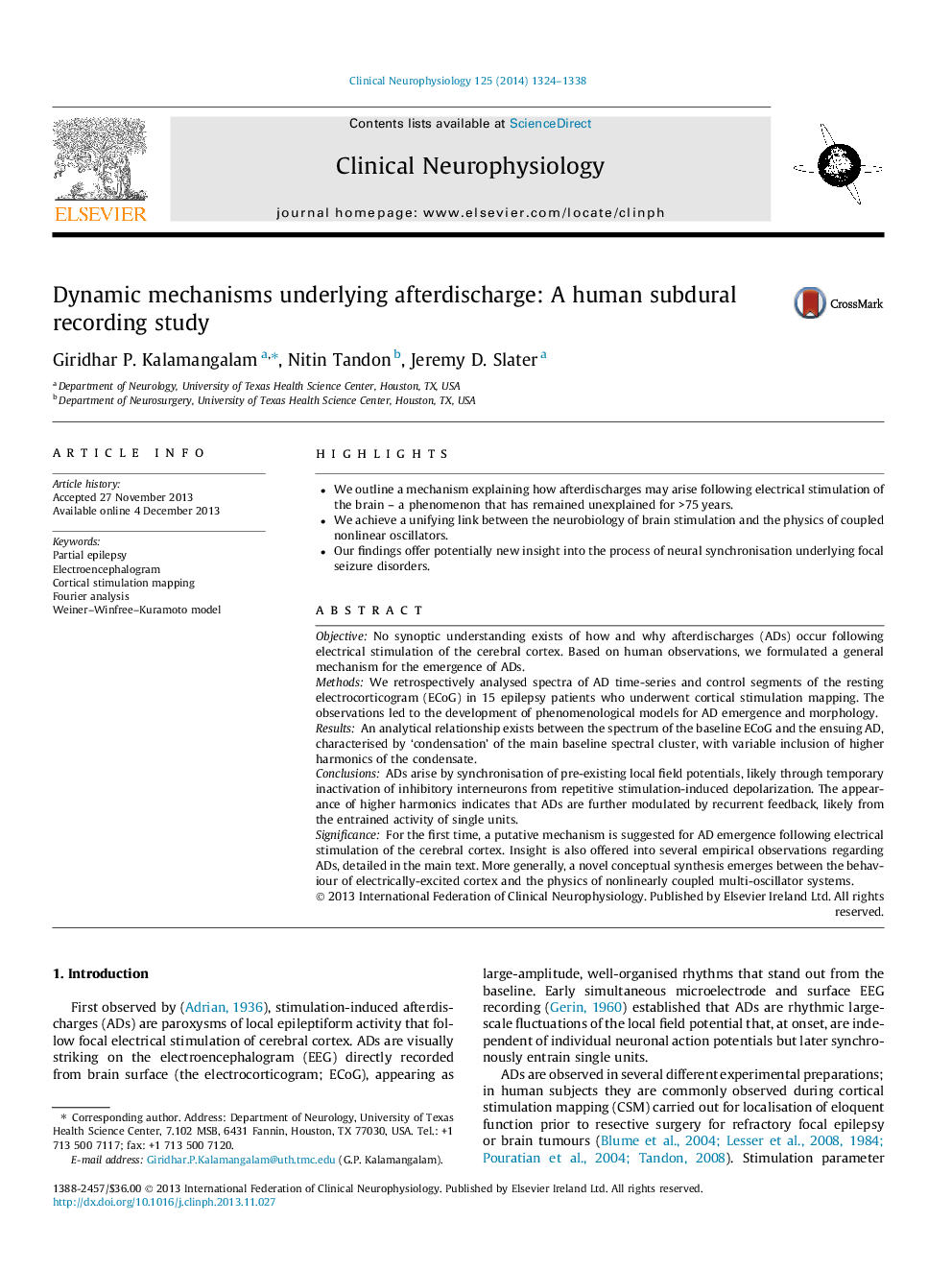| Article ID | Journal | Published Year | Pages | File Type |
|---|---|---|---|---|
| 3043904 | Clinical Neurophysiology | 2014 | 15 Pages |
•We outline a mechanism explaining how afterdischarges may arise following electrical stimulation of the brain – a phenomenon that has remained unexplained for >75 years.•We achieve a unifying link between the neurobiology of brain stimulation and the physics of coupled nonlinear oscillators.•Our findings offer potentially new insight into the process of neural synchronisation underlying focal seizure disorders.
ObjectiveNo synoptic understanding exists of how and why afterdischarges (ADs) occur following electrical stimulation of the cerebral cortex. Based on human observations, we formulated a general mechanism for the emergence of ADs.MethodsWe retrospectively analysed spectra of AD time-series and control segments of the resting electrocorticogram (ECoG) in 15 epilepsy patients who underwent cortical stimulation mapping. The observations led to the development of phenomenological models for AD emergence and morphology.ResultsAn analytical relationship exists between the spectrum of the baseline ECoG and the ensuing AD, characterised by ‘condensation’ of the main baseline spectral cluster, with variable inclusion of higher harmonics of the condensate.ConclusionsADs arise by synchronisation of pre-existing local field potentials, likely through temporary inactivation of inhibitory interneurons from repetitive stimulation-induced depolarization. The appearance of higher harmonics indicates that ADs are further modulated by recurrent feedback, likely from the entrained activity of single units.SignificanceFor the first time, a putative mechanism is suggested for AD emergence following electrical stimulation of the cerebral cortex. Insight is also offered into several empirical observations regarding ADs, detailed in the main text. More generally, a novel conceptual synthesis emerges between the behaviour of electrically-excited cortex and the physics of nonlinearly coupled multi-oscillator systems.
